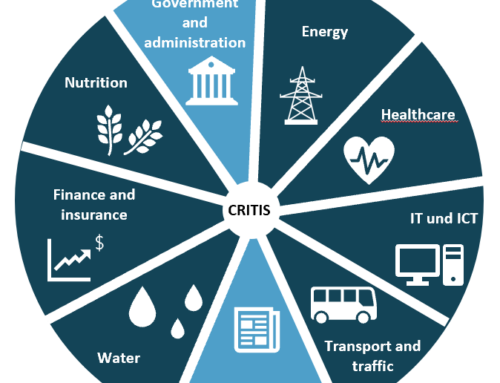As part of transformation and modernization strategies, enterprises are increasingly adopting cloud-first strategies. This provides an ideal opportunity to embed resilience. Consider three core components of modernization: people, applications and IT.
“We don’t know of any vendor or service provider today whose business model and revenue growth is not impacted by the increasing adoption of cloud-first strategies.” Those were the words of Gartner analyst Sig Nag, commenting on the company’s recent finding that the public cloud services market grew an astounding 17.5 percent in 2019 to a total of $214.3 billion.
While the cloud is transforming businesses of all types, a key aspect of its appeal to traditional enterprises in particular is the role it plays in modernizing existing IT structures. In particular, migrating existing IT to an Infrastructure-as-a-Service (IaaS) model can be a blessing to comprehensive modernization strategies, with pay-as-you-use pricing structures helping to streamline and scale IT spending to meet changing service quality requirements, while freeing up IT teams and their budgets to focus on implementing new tools, products and services.
However, for all the excitement about the cloud, organizations should not underestimate the gravity of moving to a cloud-based business model. Migrating to the cloud is as much about mitigating risk as it is about transforming business components, and often it can even be about identifying risk positions. The only reliable defense against uncertainty when planning cloud-based modernization projects is to make resilience a strategic imperative.
People
One of the biggest challenges for companies facing major change is mitigating the impact on people. Imagine you’ve been playing a specific role in the company for a number of years, and you’re attuned to the types of jobs and tasks you face on a daily basis. Not only do you know that role well, but you are highly skilled and a valued part of the company. Then all of a sudden, the company tells you that your role is changing, or worse, that the work you are doing is no longer good enough. In addition, automation, as one of the core technologies enabled by the cloud, can intensify resistance because of the perceived risk to job security.
In reality, the opposite is true. The cloud is supposed to free employees from having to keep core business processes running and give them the time and space they need to grow their skills. In fact, not developing employees enough means that the resilience of the business is compromised, especially in times of change. Companies are always facing new risks, threats, but also opportunities. Companies undergoing modernization must seize the opportunity to support their employees not only with new digital tools, but also through regular engagement and tailored training programs that reinforce the value of each employee to the company.
Applications
With the freedom that the cloud offers (i.e., public vs. private, scalable infrastructure, etc.) also comes the paradox of choice. With things like cost, security and regulation already taking a back seat when choosing which applications to host in public and private cloud environments, enterprises also need to find the best execution venue from which to run them. This is especially true for the innumerable enterprises with legacy IT that are looking to modernize via the cloud. Issues such as latency and shadow IT can cause network paths to be disrupted when migrating legacy applications. This results in organizations being hit by early problems and leads to a premature return to hosting applications internally, dealing a massive blow to the momentum of modernization strategies.
It is clear that on-premises data centers will remain, supported by the multitude of partnerships between typical data center providers and cloud providers offering hybrid cloud solutions. Hybrid scenarios give enterprises the flexibility to find the best location for the application (i.e., where it is secure and where it meets better application uptime). Crucially, hybrid increases resilience by allowing organizations to take a phased approach to migrating to the cloud and minimizing the risk of disruption when moving high-risk applications. While no one wants change processes to be delayed, it’s equally important that enterprises don’t fly too close to the sun and find themselves back on track after a failed migration. The right hybrid solution, supported by a trusted partnership between a data center and a cloud provider, will be key.
IT
Similar to hybrid IT, risk identification efforts for modernization strategies should also focus on the resilience of logical and physical IT components. When we think of protecting IT, we typically think of cybersecurity or cloud recovery. While these are essential, companies also need to consider whether the environment in which the physical hardware resides could ultimately pose a risk. Some questions companies need to ask themselves are: Where will server and storage units be kept? Does it share the space with pipes carrying water or gas? Is the temperature and humidity of the atmosphere controlled? What would happen if the uninterruptible power supply (UPS) failed? Personal experience shows that outside of weather-related incidents, most IT and business-related events are caused by power and/or network outages, which in many cases were predictable to some degree with proper due diligence planning. There is also the issue of legal and political influences at the location of the (cloud) data center.
It may be outside the remit of the board, but as IT becomes increasingly business critical to operations, these are the issues that need to be addressed to ensure business continuity. These factors also need to be reviewed on an ongoing basis. As technology becomes more efficient, it generates more heat and consumes more power, requiring additional systems to prevent damage and/or disruption. The resulting investment and OpEx required to keep on-premises hardware resilient ultimately becomes another critical factor in choosing hybrid cloud solutions. Enterprises may ultimately choose to lease space in an off-site co-location facility, where the building, infrastructure and maintenance are handed over to a provider at a predictable – and lower – monthly cost. But companies must choose and vet these service providers carefully. The risk is only supposedly outsourced.
Conclusion
Today’s IT landscape is characterized by a large number of companies and organizations running increasingly complex and business-critical applications. These companies and organizations are also becoming more dependent on these applications to keep their businesses functioning. At the same time, cloud computing is accelerating innovation at an unprecedented pace. It’s no exaggeration to say that the world is moving so fast that if you’re “rightsized” today, you’re probably already going backwards. Being at the front of the queue isn’t really good enough anymore; you need to be ahead of the curve, not only monitoring the current environment but also predicting how it will bend and how to adapt to change.
Ensuring resilience is an ongoing task that involves conducting a thorough risk assessment and rigorously testing your assumptions along the way. It’s also about reviewing the cost/benefit of new technology implementations. Resilience is about being able to admit that things don’t meet expectations and learning from the experience. Because resilience is embedded in every facet of a modernization strategy, companies can use it to ensure that their transformation is a continuous upward trajectory.
An article by Robert Osten, published on 10 January 2020
Translated by Charlotte Ley






